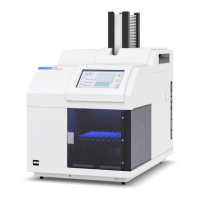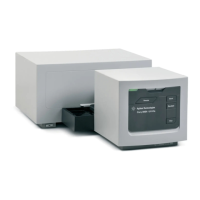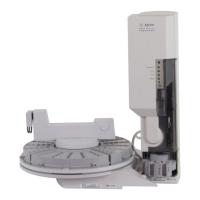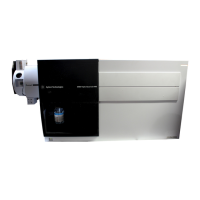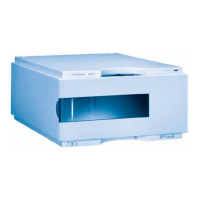5Methods
Operation Manual 91
The emission block temperature ranges from 125—175 °C. Typically, the default temperature
of 150 °C is sufficient for most applications. However, when setting the emission block
temperature, consider the following:
• If using the GC oven at high temperature (>325 °C) with the transfer line set to 400 °C, set
the emission block temperature to 165 °C to avoid a system Not Ready if the emission
block temperature cannot be maintained.
• If using the transfer line at 400 °C, set the emission block temperature to at least 150 °C to
avoid a system Not Ready.
• For sulfur analyses, the highest area response will be realized with the lowest possible
emission block temperature.
• For phosphorus analyses, the area response is independent of the emission block
temperature.
Recommended starting conditions
The FPD+ provides two temperatures zones, one for the transfer line (the main detector
temperature) and one for the emission block. For the transfer line temperature, we
recommend a temperature that is 25 °C higher than the highest column temperature. The
emission block temperature ranges from 125—175 °C. Typically, the default temperature of
150 °C is sufficient for most applications.
Flows for the maximum sensitivity FPD+ flame, which is hydrogen-rich and oxygen-poor.
Helium, either as carrier or makeup gas, may cool the detector gases below the ignition
temperature.
As with the FID, the FPD has a Lit Offset associated with it. The default Lit OIffset for the FPD is
2.0 pA.
NPD
Setting NPD adjust offset on the clock table
You can use the Clock table feature to begin Adjust offset at a specified time.
Table 6 Recommended starting conditions
Gas type Suggested flow rate
Carrier gas (hydrogen, helium, nitrogen)
Packed columns 10 to 60 mL/min
Capillary columns 1 to 5 mL/min
Detector gases
Hydrogen 60 mL/min
Air 60 mL/min
Column plus capillary makeup 60 mL.min

